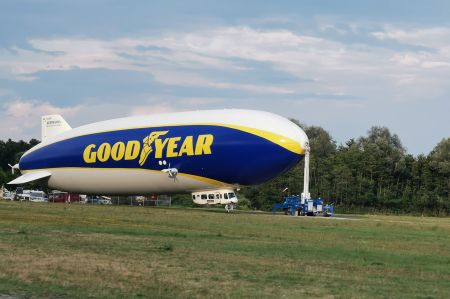Ferdinand Graf von Zeppelin - icon of aviation
- Written by Portal Editor
If you ever have the opportunity to stay in Friedrichshafen, you should definitely take a few minutes to admire the take-off and landing processes of the impressive airships of modern design, the zeppelins.
Our presence during the Friedrichshafen trade fair enabled us to observe these processes on several occasions, which was always announced early on by the loud propeller engines. Even more interesting, of course, is the ride on one of the zeppelins, which take off several times a day for sightseeing flights over Lake Constance.
And who invented them? Count Ferdinand von Zeppelin
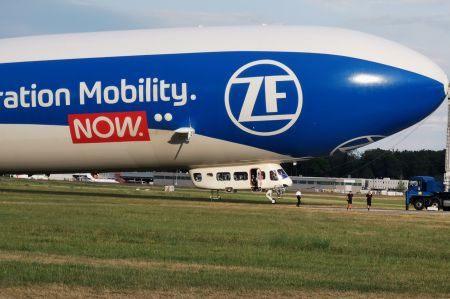 Ferdinand Graf von Zeppelin left the army early in 1890 at the age of 52 and then turned seriously to the development of the first airship. In the years that followed, together with Theodor Kober, he made initial considerations for airships, which culminated in the concept of a steerable draft in February 1894 and were published in a "Memorandum on the steerable airship". On August 13, 1898, he received a patent for a "steerable aircraft with several support bodies arranged one behind the other" (Imperial Patent Office, Patent Specification No. 98580). The design, which was thus protected retrospectively as of August 31, 1895, had the following important features, among others, but never got beyond the conception phase, so that it was not built:
Ferdinand Graf von Zeppelin left the army early in 1890 at the age of 52 and then turned seriously to the development of the first airship. In the years that followed, together with Theodor Kober, he made initial considerations for airships, which culminated in the concept of a steerable draft in February 1894 and were published in a "Memorandum on the steerable airship". On August 13, 1898, he received a patent for a "steerable aircraft with several support bodies arranged one behind the other" (Imperial Patent Office, Patent Specification No. 98580). The design, which was thus protected retrospectively as of August 31, 1895, had the following important features, among others, but never got beyond the conception phase, so that it was not built:
Gas space divided into several cylindrical cells,
Possibility of steering with the help of elevator and rudder,
two separate gondolas firmly connected to the skeleton,
propulsion by propellers, mounted at the level of greatest air resistance,
Possibility to couple several such ships to each other like train wagons (this was never realized).
Zeppelin received the plans for this first steerable airship from the widow of the Hungarian designer David Schwarz.
The first "Zeppelin" LZ 1
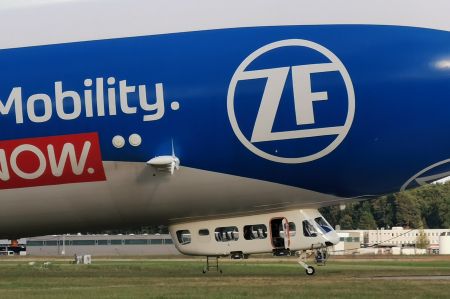 A commission of experts to whom von Zeppelin had presented his designs in 1898 showed little interest, leaving the Count largely on his own to implement his idea. In 1898 he founded the "Gesellschaft zur Förderung der Luftschifffahrt", for which he raised more than half of the share capital of 800,000 marks (adjusted for inflation in today's currency: around 5,752,000 euros). He initially delegated the technical implementation to the engineer Theodor Kober and later to Ludwig Dürr.
A commission of experts to whom von Zeppelin had presented his designs in 1898 showed little interest, leaving the Count largely on his own to implement his idea. In 1898 he founded the "Gesellschaft zur Förderung der Luftschifffahrt", for which he raised more than half of the share capital of 800,000 marks (adjusted for inflation in today's currency: around 5,752,000 euros). He initially delegated the technical implementation to the engineer Theodor Kober and later to Ludwig Dürr.
In 1898, the production of parts for the first Zeppelin began in the factory of Carl Berg in Lüdenscheid, who was also involved in the construction of David Schwarz's airship. A further 18 large, drum-shaped balloons, which will later be hung in the skeleton of the first Zeppelin Z1, came from the Clouth Gummiwerke AG plant in Cologne. The assembly of the first Zeppelin rigid airship began in 1899 in a floating assembly hall on Lake Constance in the Bay of Manzell near Friedrichshafen. This hall could be turned into the wind for the difficult launch process.
The LZ 1 prototype (LZ for "Luftschiff Zeppelin") was 128 m long, 11.65 m in diameter and was powered by two Daimler engines, each with 10.4 kW (14.1 hp). To balance (trim) the approximately 13-ton construction, a 130-kg weight that could be slid between the front and rear gondolas was used. 11,300 cubic meters of hydrogen provided buoyancy as lifting gas, but the payload was only about 300 kg.
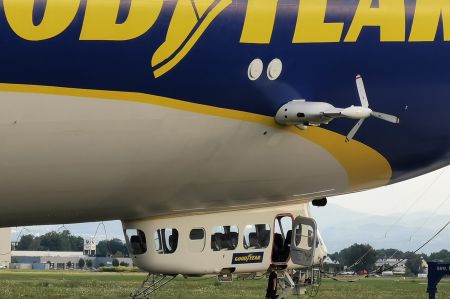 Despite initial successes, the construction of the second zeppelin was only possible through donations and the proceeds of a kind of lottery. The financial situation remained difficult. Due to a series of accidents with his airships, he was popularly referred to as the fool from Lake Constance.
Despite initial successes, the construction of the second zeppelin was only possible through donations and the proceeds of a kind of lottery. The financial situation remained difficult. Due to a series of accidents with his airships, he was popularly referred to as the fool from Lake Constance.
When the Zeppelin LZ 4 crashed near Echterdingen near Stuttgart on August 5, 1908, it triggered a wave of helpfulness and a turning point. The decisive factor was a speech given by an unknown person, in which he asked the German people to collect them in order to create a new Zeppelin. The "Zeppelin donation of the German people" carried out as a national donation brought in over six million marks, with which Zeppelin was able to found Luftschiffbau Zeppelin GmbH and the Zeppelin Foundation.
Civil and military use of airships
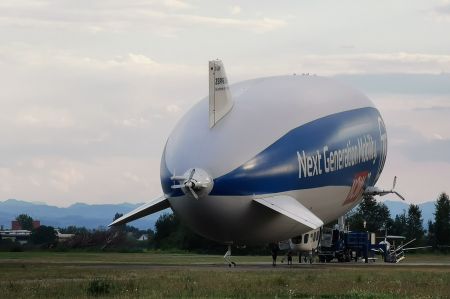 In 1908 the military administration bought the fully functional airship LZ 3 and put it into service as the Z I. From 1909 Zeppelins were used in civil aviation. In November 1909 the Deutsche Luftschifffahrts-AG (DELAG) was founded. In 1910, Zeppelin took part in an expedition to Spitsbergen to explore the conditions for using airships in Arctic exploration. In the same year he acquired a 25-hectare site on the Pirschheide in Potsdam West. In 1912 the largest airship hangar in Germany was built here. The DELAG transported a total of almost 35,000 people on more than 1,500 trips up to the start of the First World War in 1914, after which the LZ 11, LZ 13 and LZ 17 were handed over to the German army.
In 1908 the military administration bought the fully functional airship LZ 3 and put it into service as the Z I. From 1909 Zeppelins were used in civil aviation. In November 1909 the Deutsche Luftschifffahrts-AG (DELAG) was founded. In 1910, Zeppelin took part in an expedition to Spitsbergen to explore the conditions for using airships in Arctic exploration. In the same year he acquired a 25-hectare site on the Pirschheide in Potsdam West. In 1912 the largest airship hangar in Germany was built here. The DELAG transported a total of almost 35,000 people on more than 1,500 trips up to the start of the First World War in 1914, after which the LZ 11, LZ 13 and LZ 17 were handed over to the German army.
From 1914 war airships were built for the First World War. Initially, the airships were an important part of warfare as bombers and reconnaissance aircraft. Later, airplanes increasingly took over the role of zeppelins. Zeppelin's plans envisaged expanding Potsdam into the aviation center for Europe. In 1917, however, production had to be stopped.
Aircraft construction parallel to the airships
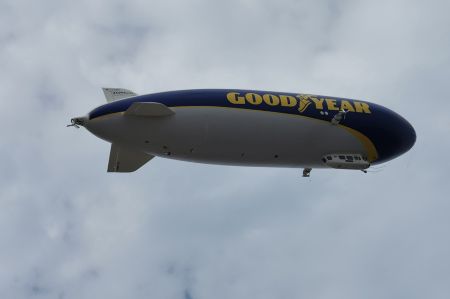 Although Zeppelin was dedicated to airship construction, he was farsighted enough to promote the construction of large aircraft. He supported the start-ups of the Maybach engine works and the aircraft construction company in Friedrichshafen and himself founded the Zeppelin works in Friedrichshafen (later Dornier) and Staaken. Aircraft construction in Friedrichshafen became one of the leading manufacturers of twin-engine large aircraft, while the Zeppelin works in Berlin-Staaken and Friedrichshafen produced even larger, so-called giant aircraft. Chief designer Claude Dornier introduced the light metal construction adopted from airships to aircraft construction, and Zeppelin experienced the maiden flight of the first giant flying boats.
Although Zeppelin was dedicated to airship construction, he was farsighted enough to promote the construction of large aircraft. He supported the start-ups of the Maybach engine works and the aircraft construction company in Friedrichshafen and himself founded the Zeppelin works in Friedrichshafen (later Dornier) and Staaken. Aircraft construction in Friedrichshafen became one of the leading manufacturers of twin-engine large aircraft, while the Zeppelin works in Berlin-Staaken and Friedrichshafen produced even larger, so-called giant aircraft. Chief designer Claude Dornier introduced the light metal construction adopted from airships to aircraft construction, and Zeppelin experienced the maiden flight of the first giant flying boats.
Today only used for tourism or advertising purposes, the number of Zeppelins in operation is limited to a few vehicles. So it's quite an attraction when one of these gigantic airships glides by. We will "save" a little to experience such an aviation one day, the anticipation is already present.
Please read as well:
Friedrichshafen trade fair – leisure and camping open air
The Stöckl - historical market place in Cheb-Eger
-
 Zeppelin starting from Friedrichshafen
Zeppelin starting from Friedrichshafen
Zeppelin starting from Friedrichshafen
Zeppelin starting from Friedrichshafen
-
 Zeppelin starting from Friedrichshafen
Zeppelin starting from Friedrichshafen
Zeppelin starting from Friedrichshafen
Zeppelin starting from Friedrichshafen
-
 Zeppelin starting from Friedrichshafen
Zeppelin starting from Friedrichshafen
Zeppelin starting from Friedrichshafen
Zeppelin starting from Friedrichshafen
-
 Zeppelin starting from Friedrichshafen
Zeppelin starting from Friedrichshafen
Zeppelin starting from Friedrichshafen
Zeppelin starting from Friedrichshafen
-
 Zeppelin starting from Friedrichshafen
Zeppelin starting from Friedrichshafen
Zeppelin starting from Friedrichshafen
Zeppelin starting from Friedrichshafen
-
 Zeppelin starting from Friedrichshafen
Zeppelin starting from Friedrichshafen
Zeppelin starting from Friedrichshafen
Zeppelin starting from Friedrichshafen
-
 Zeppelin starting from Friedrichshafen
Zeppelin starting from Friedrichshafen
Zeppelin starting from Friedrichshafen
Zeppelin starting from Friedrichshafen
-
 Zeppelin starting from Friedrichshafen
Zeppelin starting from Friedrichshafen
Zeppelin starting from Friedrichshafen
Zeppelin starting from Friedrichshafen
-
 Zeppelin starting from Friedrichshafen
Zeppelin starting from Friedrichshafen
Zeppelin starting from Friedrichshafen
Zeppelin starting from Friedrichshafen
-
 Zeppelin starting from Friedrichshafen
Zeppelin starting from Friedrichshafen
Zeppelin starting from Friedrichshafen
Zeppelin starting from Friedrichshafen
-
 Zeppelin starting from Friedrichshafen
Zeppelin starting from Friedrichshafen
Zeppelin starting from Friedrichshafen
Zeppelin starting from Friedrichshafen
-
 Zeppelin starting from Friedrichshafen
Zeppelin starting from Friedrichshafen
Zeppelin starting from Friedrichshafen
Zeppelin starting from Friedrichshafen
-
 Zeppelin starting from Friedrichshafen
Zeppelin starting from Friedrichshafen
Zeppelin starting from Friedrichshafen
Zeppelin starting from Friedrichshafen
-
 Zeppelin starting from Friedrichshafen
Zeppelin starting from Friedrichshafen
Zeppelin starting from Friedrichshafen
Zeppelin starting from Friedrichshafen
-
 Zeppelin starting from Friedrichshafen
Zeppelin starting from Friedrichshafen
Zeppelin starting from Friedrichshafen
Zeppelin starting from Friedrichshafen
https://www.alaturka.info/en/germany/baden-wuerttemberg/5758-ferdinand-graf-von-zeppelin-icon-of-aviation#sigProId3e3bdc2c3b
